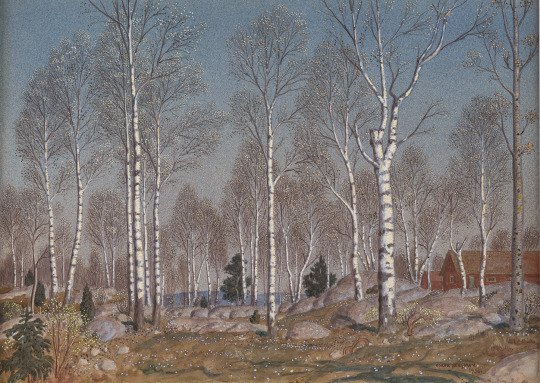Video
youtube
Ravel - Introduction et allegro, for harp, flute, clarinet, and string quartet (1905)
At the turn of the century, two different harp manufacturers developed different mechanics for allowing the harp to carry a more chromatic range. Debussy and Ravel were the two ‘stars’ of French music, and so the companies reached out to them to write music to display their respected harps capabilities. Pleyel commissioned Debussy to write music for their chromatic harp, and Érard commissioned Ravel to write for their pedal harp. This relatively dull backstory helped to produce one of the most beautiful works of chamber music in history. It’s also an unusual work because of the unique ensemble, which in a way is looking forward to contemporary music [writing for small chamber ensembles of unique combinations is much cheaper than a full orchestra, and you can still get the benefits of contrasting sonorities]. But by putting the sound of the plucked harp against winds and strings, Ravel uses their contrast to highlight each other. Also, because it is a display piece for the harp, the harpist acts almost like a concerto soloist, taking over the main melody, filling the music with decorations, and even getting its own cadenza. It opens with the first main melody, played in the winds, a slow drawl wavering in the air, kind of mysterious. Then the second main melody comes in on the strings, very simple, bare, but surprisingly moving. Four notes falling, then rising up. Then the melancholy tune introduces the harp’s glissandos. Then the instruments trade melodies, the strings play the mystery motif and the winds play the melancholy one. This dreamy opening shifts into a gloriously orchestrated passage of fluttering winds over a melody in the cello, creating such a luscious sound from a small ensemble. This bleeds into the Allegro, opening with the harp playing a new main melody, modal and soft, with complicated figuration around it. For the rest of the work, the three melodies come back again and again, with different colors and harmonies. There is a great passage that makes use of the strings plucking, complimenting the harp. Then, a polyphonic section where the harp plays the ‘melancholy’ melody over the string’s ‘mysterious’ melody. The first harp cadenza is intense, and unlike previous flute writing, the notes are deliberate, not just decoration. The music continues to build up to intensity, until the harp’s “official” cadenza, which opens with a Beethoven-like dramatic scale, then bringing back the melancholy melody that here sounds so stark and haunting. When the rest of the ensemble comes back, they play a happier re-write of the melancholy theme, and the ending has a more cheerful pastorale mood. The work is dreamlike, and it’s amazing to hear how much emotion is concentrated into such a short time. Unfortunately, the unique ensemble makes it rare to play in concert, and that’s a shame because this is one of Ravel’s most beautiful treasures.
205 notes
·
View notes
Text
If you need to take a break, take a break!
I didn't touch my flute for months after I graduated, maybe even a year, I don't remember at this point. I couldn't stand to even look at it.
Give yourself time for this feeling to pass. If you feel like you're forcing yourself to play, then you probably still need rest.
If you feel like it, during this time of rest, explore music literature. Find a book about the history of the piano or a famous composer for the instrument or a performer's biography and read. It may not be standard of learning an instrument, but you can still learn a lot through this avenue.
A quick Google search gives these books:
A Natural History of the Piano: The Instrument, the Music, the Musicians - from Mozart to Modern Jazz and Everything in Between
Franz Liszt Series
When you're ready, find something simple and ease yourself back into it. Find something fun and/or simple to play through - be it the familiar repetitions of a scale or an old etude book or a pop song. I found that if I played pop songs, I could then focus on smaller things. Melody, phrasing, and eventually dynamics were easier to incorporate when I knew exactly how the song was supposed to sound. I think I spent a few months doing this, but at least I was playing. Eventually, I added technical exercises and (even later) scales and etudes.
Even when I started etudes again, I played through pieces that were below my grade level and aimed for absolute technical precision and musicality and carried the principles into more challenging music. Strive for accuracy before difficulty.
I didn't join a band again for a few years after I graduated. It would have been too soon. But I gave myself time to play again and now this past year I've had so many opportunities for playing. And I started slow! Eventually, I joined a band. So I was still practicing my technique and added band rep. After a year of that, I had found a way to practice that didn't make me want to claw my eyes out.
TL;DR: Take time to rest. Then find something to play that serves you. And finally add in the parts you need to work on to improve yourself and grow as a musician. Growth isn't always linear. Sometimes it plateaus as you rest. Sometimes it circles back as you pick yourself back up. But always make sure that you're taking care of yourself.
has anyone just stopped loving to play their instrument? its been 5 years and i play the piano, but recently ive burnt out and i havent played in the last year or more- i have no motivation to do so, and i can't make myself play, but i still love it?? what do i do? do i cancel lessons? cus it seems forced rn :((
17 notes
·
View notes
Text
The tickets for my community band concert are $25 each. Like, if I wanted to bring my family of three other people, that comes to $75 which is over half a day's pay. I can't ask my friends (who make the same minimum wage I do) to come to that. Even if it was $20 a ticket, that seems much more affordable on my $16.75/hour wages.
Compare that to the student orchestra concert where tickets were $10. Even with this ensemble, the December concert was by donation and the previous April concert at least had $20 tickets available online.
Why such a drastic change from $60 to $75?
#life updates#its the same ensemble same director#its an auditorium this time but if its going to cause such a hike in cost#i dont think we've ever filled the space either
0 notes
Text
Title: Orion
Composer: Claude Vivier
Performer: WDR Sinfonieorchester Koln
2 notes
·
View notes
Text
Krzysztof Kaczka, flute
Metropolitan Opera Orchestra
Schubert: Works for Flute
Introduction and Variations on Trockne Blumen
Winterreise
Schwanengesang
Arpeggione Sonata in A minor
2 notes
·
View notes
Text
youtube
Friedrich Schwindl (1737-1786):Concerto for Flute and Orchestra in D
Intèrprets: Rіcаrds BröhI (flute); Kаmmerorchester KöIn; Jаn Corаzollа (1931-1998, conductor)
1. Allegro 00:00 2. Adagio 08:03 3. Rondo Presto 13:46
4 notes
·
View notes
Text
Have I practiced today?
No.
Have I played the entirety of Fearless TV?
Absolutely.
1 note
·
View note
Text
I'm using an alternate fingering for high A in Mendelssohn 3 and it is sounding very flat whenever I practice at home. However, in orchestra, the alt. fingering sounds in tune. Which is not making sense to me, because A is the tonic and shouldn't need to be altered to be in tune?
It works better in context, so I will continue to practice it.
5 notes
·
View notes
Photo

John Cage preparing a piano in 1947
photograph by Irving Penn
790 notes
·
View notes
Text
Felix Mendelssohn
Symphony No. 4 in A Major, Op. 90
"Italian"
I. Allegro vivace
Performed by the London Symphony Orchestra
0 notes
Text
for every action there is an equal and opposite reaction, so that means to combat John Cage's 4'33, I propose a piece called 3'44, wherein every single note within range possible is played for three minutes and forty-four seconds
315 notes
·
View notes
Text

Felix Mendelssohn
Symphony No. 3
"Scottish"
Performed by Philharmonia Orchestra with Janos Sandor
2 notes
·
View notes
Text

Magnus Hjalmar Munsterhjelm, Finnish
Born: October 19, 1840, Tuulos, Finland
Died: April 2, 1905, Helsinki, Finland
“Moonlit Night”
Date: 1883
Medium: Oil on canvas
Height: 139 cm (54.7 in);
Width: 110 cm (43.3 in)
Private collection
245 notes
·
View notes
Text
Practice video... number one?
A snippet (and I mean a Snippet) of my piccolo practice today.
#k313 #flute #piccolo #practicevideo #orchestra
instagram
#flute#k313#practice tag#sharing this is kinda scary but it's a practice video#obviously its not going to be perfect#Instagram
0 notes
